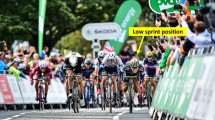Abstract
An experiment was conducted in a 20-level building to study the individual ascent speed on long stair. 165 college students, including 51 female students and 114 male students, took part in the experiment. Their ascent speeds and heart rates were recorded during they traveled upward. The experimental results show that their ascent speeds decrease continuously for the first 13–14 levels, then the ascent speeds keep at around 0.68 m/s for the males and 0.52 m/s for the females. Further study was conducted to explore the factors that might affect the ascent speeds on long stair. For the males, their ascent speeds show no obvious correlation with their body mass index and their scores of physical fitness test. For the females, it is observed that those who are overweight or fail in physical fitness test have the lowest ascent speed. After traveling upward around 18 levels, the average heart rates increase to 135 bpm and the average relative heart rates increase to 60% for the males, while the average heart rates increase to 150 bpm and the average relative heart rates increase to 70% for the females. Moreover, participates are more likely to use handrail for assistance as they move upward on higher levels.

















Similar content being viewed by others
References
Peacock RD, Hoskins BL, Kuligowski ED (2012) Overall and local movement speeds during fire drill evacuations in buildings up to 31 stories. Saf Sci 50:1655–1664.
Peacock RD, Averill JD, Kuligowski ED (2009) Stairwell evacuation from buildings: what we know we don’t know. In: NIST Technical Note 1624
Kuligowski ED (2012) Guest editorial: the significance of pedestrian and evacuation dynamics. Fire Technol 48:1–2
Proulx G (1995) Evacuation time and movement in apartment buildings. Fire Saf J 24:229–246
Fujiyama T, Tyler N (2010) Predicting the walking speed of pedestrians on stairs. Transport Plan Technol 33:177–210
Fang ZM, Song WG, Li ZJ, Tian W (2012) Experimental study on evacuation process in a stairwell of a high-rise building. Build Environ 47:316–321
Yang LZ, Rao P, Zhu KJ, Liu SB, Zhan X (2012) Observation study of pedestrian flow on staircases with different dimensions under normal and emergency conditions. Saf Sci 50:1173–1179
Burghardt S, Seyfried A, Klingsch W (2013) Performance of stairs—fundamental diagram and topographical measurements. Transp Res C 37:268–278
Ma J, Song WG, Tian W, Lo SM, Liao GX (2012) Experimental study on an ultra high-rise building evacuation in China. Saf Sci 50:1665–1674
Kuligowski ED, Peacock RD, Averill JD (2013) Modeling the evacuation of the world trade center towers on september 11, 2001. Fire Technol 49:65–81
Ronchi E, Kuligowski ED, Nilsson D, Peacock RD, Reneke PA (2014) Assessing the verification and validation of building fire evacuation models. Fire Technol 52(1):197–219
Fruin JJ (1971) Pedestrian planning and design. Metropolitan Association of Urban Designers and Environmental Planners, New York
Kretz T, Grunebohm A, Kessel A, Klupfel H, Meyer-Konig T, Schreckenberg M (2008) Upstairs walking speed distributions on a long stairway. Saf Sci 46:72–78
Lam HT, Yuen KK, Lee WM, Lee YY (2014) Experimental study on upward movement in a high-rise building. Saf Sci 70:397–405
Choi JH, Galea ER, Hong WH (2014) Individual stair ascent and descent walk speeds measured in a korean high-rise building. Fire Technol 50:267–295
Jiang CS, Deng YF, Hub C, Ding H, Chow WK (2009) Crowding in platform staircases of a subway station in China during rush hours. Safety Sci 47(7):931–938
Fujiyama T, Tyler N (2011) Free walking speeds on stairs: effects of stair gradients and obesity of pedestrians. In: Peacock RD (ed) Pedestrian and evacuation dynamics. Springer US
Hoskins BL, Milke JA (2012) Differences in measurement methods for travel distance and area for estimates of occupant speed on stairs. Fire Saf J 48:49–57
Hagberg M (1981) Work load and fatigue in repetitive arm elevations. Ergonomics 24:543–555
Whitley JD, Schoene LL (1987) Comparison of heart rate responses. Water walking versus treadmill walking. Phys Ther 67:1501–1504
Acknowledgments
The authors gratefully acknowledge the comments from the reviewers/editors and financial supported by Program for Changjiang Scholars and Innovative Research Team in University (IRT 13092), National Natural Foundation Project (No. 71573215) and Chongqing science and technology plan application development key project (Nos. cstc2014yykfB30003 and 2015H01615).
Author information
Authors and Affiliations
Corresponding author
Rights and permissions
About this article
Cite this article
Chen, J., Wang, J., Wang, J. et al. An Experimental Study of Individual Ascent Speed on Long Stair. Fire Technol 53, 283–300 (2017). https://doi.org/10.1007/s10694-016-0579-1
Received:
Accepted:
Published:
Issue Date:
DOI: https://doi.org/10.1007/s10694-016-0579-1




